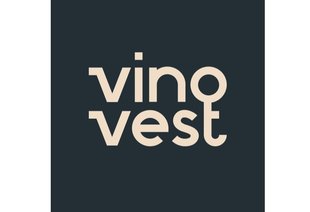Vinovest Quarterly Report, Q4 2022
New year, new us. As we soar into 2023, we’re trying a new format for the Vinovest quarterly report. Publishing it as a blog rather than a PDF means easier navigation, readability, and sharing for you.
Don’t worry. All the great content you know and love is still here. So, without further ado, let’s dig into what happened in wine investing in the fourth quarter of 2022.
Further reading
- Interested in learning more about investing in fine wine? Check out our full Comprehensive Guide to Wine Investment.
By The Numbers
8.42% - The average appreciation for wine in Vinovest portfolios in Q4
101.4% - The appreciation of 2008 Domaine de la Romanée-Conti Grands Échezeaux Grand Cru, making it the best-performing wine of 2022
1.90% - The new management fee for Grand Cru clients, down from 2.25%. Learn more about our sweeping fee reductions below.
$100,000,000+ - Total assets under management reached by Vinovest in Q4
2,223 - Number of members in the Vinovest Community, which was launched in January 2022
Fine Wine Performance in Q4
Burgundy and Champagne have been the runaway stars of 2022. However, the fourth quarter saw the French regions plateau, likely as a price correction for their white-hot performance through the first ten months. The slight slowdown left the door open for Italy to claim the title as the top-performing wine region of the quarter.
According to Liv-ex, Italy made up 10% of all trade by value on the secondary market in November. Tuscany alone accounted for 8.1% of the total market share, its highest percentage of the year. The recent releases of 2019 Sassicaia and Tignanello spurred demand amongst consumers along with its en primeur launch of 2018 Brunello di Montalcino.
Italy’s strong performance shouldn’t come as a surprise. It has a track record of low volatility combined with increasingly diverse wines. Add supreme relative value, and it’s easy to see why the region topped the charts in the fourth quarter. Moreover, Italy finished the year as the third-best performing region behind only Burgundy and Champagne.

Source: Liv-ex
If you’re a fan of Rhône wine, alarm bells are probably going off in your head. Low volatility. Diverse wines. Excellent relative value. That sounds like the Rhône! And you’d be right. The Rhône had a solid year, with returns of 7.0% through 11 months before a slight December dip to finish at 5.60%.
The Rhône stands out as one of the regions least impacted by Burgundy and Champagne’s dominance. According to Liv-ex, the Rhône maintained a 4.0% trade share on the secondary market, only a slight drop from its 4.5% average the previous year. More importantly, that decline was smaller than those experienced by Bordeaux, California, Tuscany, and Piedmont.
That’s not all. Stability-wise, the Rhône is more solid than Arnold Schwarzenegger’s core. Per Liv-ex, “Over the last three years, the Rhône 100 index has risen 27.4% and has shown an average annualised volatility of 13.8%....By contrast, the Burgundy 150 index has increased 62.9% but its volatility has also been one of the highest at 25.2%.” If Burgundy and Champagne fail to sustain their sky-high prices in the new year, Italy and the Rhône should provide cushy landing spots for wine collectors.
Financial Markets in Q4
The traditional financial markets closed the quarter on a sour note. Stocks had their worst year since 2008. Bonds had their worst year in decades. As if that was not enough, both asset classes endured annual declines for the first time since the 1960s.
If you’d prefer to channel your inner Ted Lasso, there is a reason for unfettered optimism amid the doom and gloom. The Dow Jones Industrial Average surged 16.01%, while the S&P 500 and Russell 2000 notched sterling performances. The NASDAQ was the only one of the four major indices to lag behind in the fourth quarter, finishing at -0.04%.

Source: YCharts
Many themes from the first three quarters remained constant in the fourth quarter. That includes tepid earnings and slowing economic growth. Less economically sensitive companies with lower valuations tended to fare better than tech stocks, as investors sought out defensive havens and value stocks.
Meanwhile, concerns about the pending recession and rising interest rates contributed to large caps outperforming small caps. Small caps did show some tenacity, though. The Russell 2000 recorded a 6.23% return, indicating that some investors believe that peak inflation and interest rates have passed.
Financial Market Outlook in 2023
The official Merriam-Webster Word of the Year was “gaslighting.” For our money, it should have been “inflation.” Americans saw the highest inflation rate in more than 40 years, with many other countries seeing similarly high levels. But wait, there’s good news. As of the writing of this report, the US has seen five consecutive months with a decline in inflation, a sign that the economy may be approaching a transitional period.
One way to measure inflation is the Consumer Price Index, which peaked in June at 9.1%. By November, that figure was down to 7.1%, with forecasters expecting the December rate to hit 5%. Other metrics for inflation have seen comparable rates of decline. If price pressure continues to ease faster than expected, investors will have a welcome surprise at the start of the new year.
Additionally, the Federal Reserve appears near the end of its historically aggressive rate hikes. In December, the Fed signaled that interest rates would peak 75 basis points above the current rate. Based on the rollout of previous hikes, the Fed should hit that mark in the first half of 2023 and potentially eliminate a major headwind facing asset prices.
Looking forward, the projections for economic growth remain grim. J.P. Morgan predicted the global economy to grow at a “sluggish pace of around 1.6% in 2023 as financial conditions tighten.” Its 2023 Market Outlook report also anticipates a likely recession before the end of the year, though the risk is not imminent as long as central banks continue to tame inflation. If the global economy shows resilience, it could offer positive momentum for asset classes in the first quarter.
The 8 Biggest Stories from Q4
Call the fourth quarter CEO Anthony Zhang’s wine cellar because it was stocked with goodies. That’s not hyperbole, either. In December, he entered this bottle of 1992 Domaine de la Romanée Conti at a company blind tasting. Here are eight other nuggets from the fourth quarter that were just as good.

1) New Features Added to Managed Portfolios
In the past, clients could invest in Aggressive, Moderate, or Conservative portfolios. There was just one problem. These terms often confused clients since they were unaware of what made a wine portfolio aggressive or conservative.
We made the portfolios easier to understand by aligning our portfolio styles with the time it takes for your wine to mature. Our three new portfolio styles include:
- Short-Term Portfolios: prioritizes established wines that will mature in 5 to 7 years.
- Medium-Term Portfolios: balances risk and reward with wines that will mature in 7 to 10 years.
- Long-Term Portfolios: optimizes for maximum portfolio diversity and flexibility over 10+ years.
We also drilled down and determined ideal selling windows for each wine at Vinovest. These selling windows let clients know when market demand for their wine will peak. When their wine reaches its selling window, Vinovest will sell it to our global network of buyers (merchants, distributors, wine shops, etc...) These selling windows represent the ideal time to sell wine and realize returns.
2) New Way to Sell Your Wine
Anyone who wants to sell before or after the recommended selling window can list their wines on our marketplace. The marketplace connects clients with our global network of buyers. They will have complete control by setting the list price, making counter offers, and accepting the best offer.
Wines outside their selling window often have less demand, so there is no guarantee on how quickly they will sell. It may take a few weeks or months. Selling wine prematurely also comes with a 1.5% selling fee. If clients choose to sell their wine within the selling window, they will not be charged a selling fee.
3) Reduced Management Fees
The new portfolio styles and selling windows mean significant savings for you. They allow Vinovest to secure multi-year contracts at more favorable rates with suppliers and insurers. That means more cash stays in your pocket. Cha-ching!
These reduced fees went into effect on January 1.
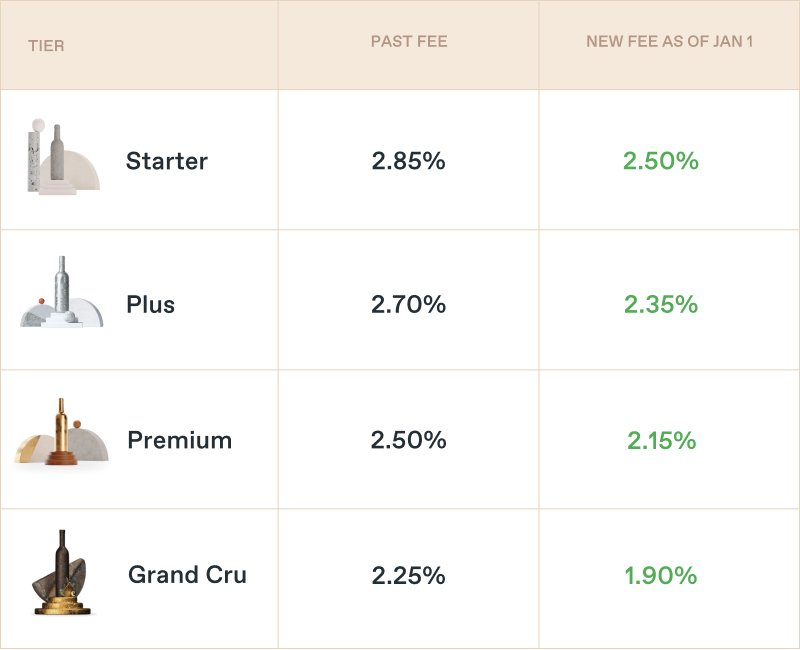
4) The Pound Strengthens Against the Dollar
Much of the discourse in 2022 surrounded the US dollar strengthening against the British pound. This seismic shift had a lasting impact on the fine wine market since most wines are denominated in British pounds. Since wine prices are tied to the strength of the British currency, the results were as palatable as microwaved tea.
The narrative changed in the fourth quarter. The British pound jumped from £1.12 per $1 at the start of the quarter to £1.21 per $1 at the start of the new year. Put another way, the pound increased 8% in value relative to the dollar in that three-month span.
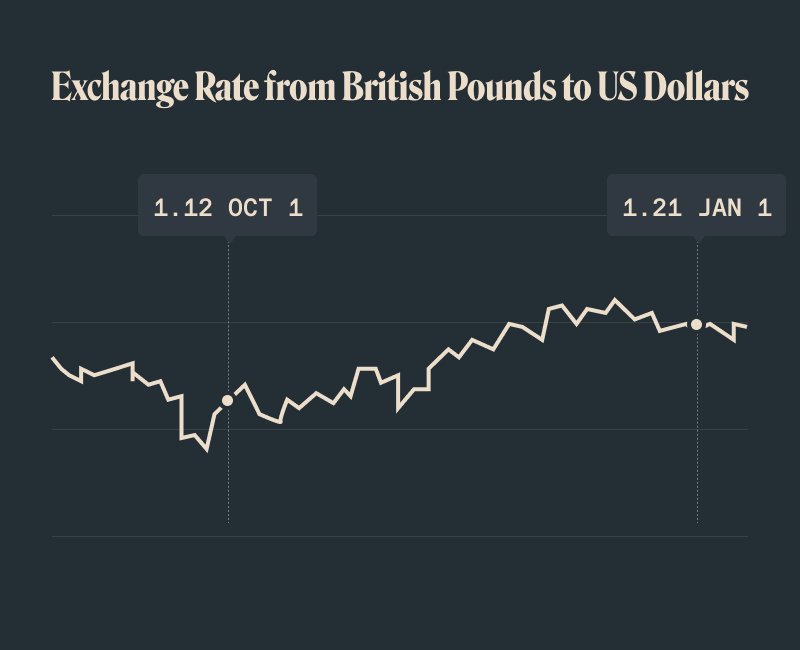
For anyone with a Vinovest portfolio, the upswing of the pound should translate to an upswing for your portfolio. That applies even if your wines did not appreciate. If the pound continues to gain strength in 2023, expect more positive returns for this ‘liquid’ asset.
5) Lights, Camera, Auction
In a year where most asset classes were surviving, fine wine was thriving. There are many ways to quantify that success - the record trading volume, the record trading value, the record indice performances…you get the idea.
One often overlooked barometer is the auction industry. According to the luxury auction house Sotheby’s, it notched $150 million in sales in 2022, a 14% increase from last year’s $132 million. Though, anyone who has glimpsed auction headlines shouldn’t be surprised.
Some notable hammer prices from the fourth quarter included:
- A 3L bottle of 1971 Domaine de la Romanée-Conti sold for $81,250. (The original price was £325 plus tax.)
- Hospice de Beaune auctioned 802 barrels of wine for $31.9 million, more than doubling its previous record.
- Domaine Ponsot auctioned 261 lots for $1.36 million, with several wines breaking world records for price.
That’s not all. The number of Sotheby’s auctions held jumped 30% from 2021. As the demand for investment-grade wine and spirits continues to rise, expect the number of auctions to grow accordingly.
6) All Hands on Deck
Normally, an all hands is a closed company meeting where a team reflects on its breakthroughs, achievements, and challenges. This year, Vinovest did something different. We opened up our all hands meeting to the public.
Why? Because we wanted to hear directly from you, the client. Our public all hands allowed clients to ask questions, share ideas, and provide feedback directly with our team while getting a sneak peek at what’s in store for 2023.
If you missed out, you can watch the full meeting in the Vinovest Community.
7) Champagne Sales Sparkle in 2022
Inflation has pinched many pockets. But it hasn’t stopped people from having a good time. In 2021, Champagne sales hit an all-time high of $6.1 billion. Following the news, Union of Champagne Houses (UMC) chairman David Chatillon said, “We will very likely beat this record again, and 2022 will be the new Champagne record in terms of turnover,” he said.” He was right.
Champagne is on pace for another record-breaking year. The UMC expects the region to eclipse more than 320 million bottles sold in 2022. More people than ever are celebrating with a glass of famous fizz, including Bernard Arnault. The French business magnate owns brands like Moët & Chandon, Krug, Veuve Clicquot, and Château d’Yquem. With their sparkling success, he was able to reclaimed the title of the wealthiest person in the world, with an estimated net worth of $192 billion.
This boom is most visible in the secondary market. According to Liv-ex, Champagne’s trade share nearly doubled from 8.8% to 13.6% in one year. That’s despite prices appreciating 18.70% among top brands. Even though the region was cooling demand in November and December, there’s reason to think that was an exception and not a rule.
8) Worldwide Whiskey Webinars
Interest in Whiskeyvest has exceeded expectations. More than 15,000 people reserved casks of fine whiskey when we launched. The spike in demand led to a months-long waiting list.
So, what makes whiskey special? What do people see in this asset class? For those answers, we turned to two industry experts, Ray Digilio and Rickesh Kishnani. The two joined Whiskeyvest and more than 200 people to share their takes on the past, present, and future of these coveted casks. Digilio examined the landscape of American whiskey investing, while Kishnani did the same for Scotch.
See the presentations for yourself here in the Vinovest Community.
Investing Outlook for 2023
We’ve said it once. We’ll say it again. Forecasters do not have the rosiest outlook for the global economy in 2023. Despite late rallies in the bond and equities markets, volatility remains an omnipresent threat. Meanwhile, the Fed will likely continue to hike interest rates to tame inflation.
If the traditional markets are a Debbie Downer, though, the fine wine market is an Uma Upper. Fine wine acted as an inflationary hedge and stabilizing force in portfolios throughout 2022, and there’s no reason to think that will change. As one report noted, “Given fine wine’s track record during periods of inflation and uncertainty, long-term enthusiasts will find it easy to look on the bright side.”
Here are three stories were are watching closely in 2023:
1) How Will Rising Stars Perform in 2023?
It’s hard to overstate the importance of brand strength. It influences everything from demand to distribution to price. Therefore, it’s worth noting when wineries bolster their brand strength.
One gauge of brand strength is the Liv-ex 100. It is an index that follows 100 of the most traded wines on the secondary market and offers a portal into the minds of collectors, critics, and consumers. According to the index, 17 new names entered the rankings that were not on it in 2021. That includes:
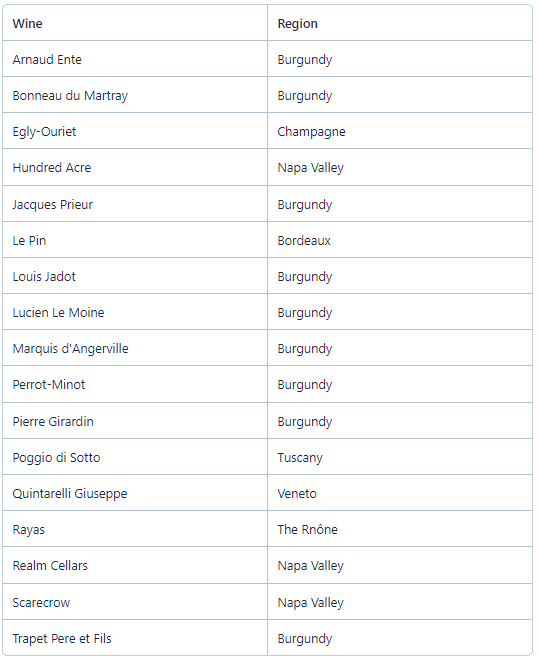
To no one’s surprise, Burgundy dominated the list of rising brands. It accounted for 9 of the 17 wineries, thanks to its title as the top-performing wine region in 2022. Burgundy was also the fastest-expanding region on the secondary market. The number of Burgundies traded has more than doubled from 829 to 1,924 wines in the four years.
Make your mental notes now. These are names to watch in 2023. The increased interest around these brands bodes well for anyone holding them in the portfolio. And, if you don’t have wines like Quintarelli Giuseppe or Poggio di Sotto stashed away already, you can snag them in the Vinovest Marketplace today.
2) How Big of a Bump Is Reclassification?
While the Bordeaux Classification of 1855 has remained effectively unchanged since its inception, Saint-Émilion updates its classification every decade. Reclassification can have a lasting impact on a wine’s price. Being moved up one tier can cause a wine’s value to soar. At the top is Premier Grand Cru Classé A, the most prestigious classification and a title held by a single estate.
Enter: Château Figeac. Some pundits believe that the estate had been unfairly snubbed in the last reclassification in 2012. A decade later, it secured redemption. Figeac earn a promotion to Premier Grand Cru Classé A alongside Château Pavie.
News of the promotion leaked before the announcement, causing sales of Figeac to spike, especially for the 2006, 2008, 2011, and 2013 vintages. Those vintages are now up 23.6%, 59.0%, 29.5%, and 34.8%, respectively, over the last year. The only question: how much more of a bump will reclassification give Figeac prices?
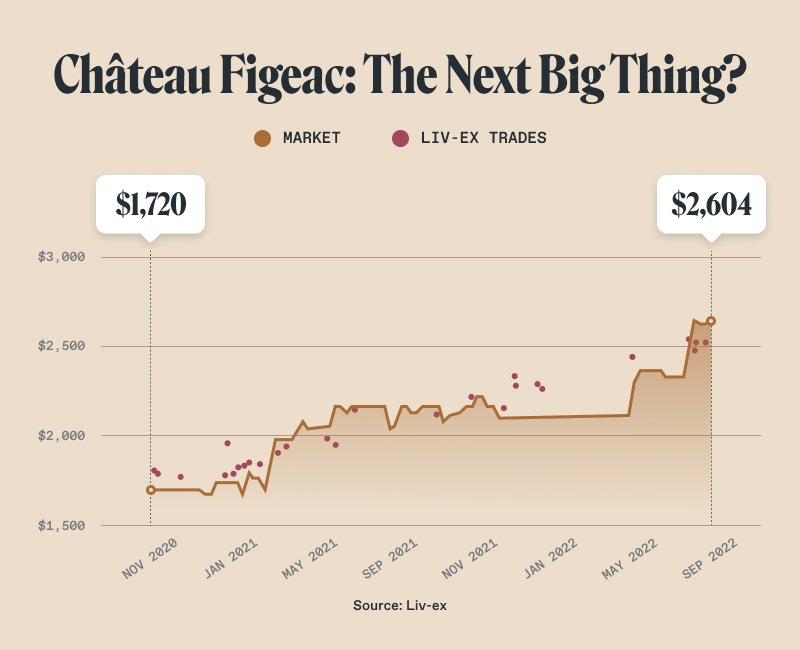
3) Will Grower Champagne and Large Formats Break Out in 2023?
There’s no shortage of glamorous Champagne brands ranging from Dom Pérignon to Krug to Louis Roederer. But what if we told you that an equally compelling yet often overlooked sparkling wine lurked in the same hallowed grounds?
If you’re not yet acquainted, let us introduce you to Grower Champagne. This sparkling wine refers to Champagne made and bottled by the same person. By comparison, many large Champagne houses use a blend of grapes from multiple growers in the region. Wine merchants expect higher demand for grower Champagne in 2023 as collectors increasingly seek out unique, small-batch wines. Some of the most sought-after names include the likes of Jacques Selosse, Ulysse Collin, and Cédric Bouchard.
The desire for highly distinctive and scarce wines makes large-format bottles equally appealing. While most wine producers use 750 mL bottles, Champagnes offer more variety, such as the magnum (1.5L), jeroboam (3L), and Rehoboam (4.5L). (There’s even something called a nebuchadnezzar that is the size of 20 standard bottles, but I digress.) Champagne houses bottle the majority of their annual release in standard bottles and fill a few dozen or so larger formats. While magnums, jeroboams, and rehoboams cost more upfront, the inherent scarcity makes them an appealing option as a portfolio diversifier and a potential trend in the new year.
Conclusion
Last year was anything but apple pies and rainbows for investors. The combination of inflation, rate hikes, and a sluggish economy proved a multi-pronged whammy on portfolio performance. But for those with fine wine in the account, there was some reprieve.
Fine wine registered a 13.10% return in 2022. Not only did it handily outperform all of the major stock indices, but it also bested Bitcoin (-65%), gold (0.4%), and bonds (-12.9%). Meanwhile, the reliable performance has made fine wine a rare beacon of stability during a period of high inflationary volatility.
Given fine wine’s track record of consistency in uncertain times, wine collectors have reason to breathe easy. This ‘liquid’ asset appears poised to weather the pending economic storm. After all, what better way is there to ride out turbulent times than with a little wine?
